Essential Ingredients for Positive Performance States: Discomfort Tolerance.
Clients ask me great questions about a wide range of issues. They want to to know how to achieve positive performance states, deal with anxiety, accelerate their learning, regulate their energy, strengthen their motivation, and manage their behavior, just to name a few. It is relatively easy for me to offer strategies which riders can use to address these concerns. However, I have noticed over the years that some clients take the skills I teach and run with them. I may not see them again for many years, and when I do, they report that the tools I provided where marvelously successful.
There are other clients to whom I provide the same tools or strategies, and they have a different result. They struggle to get new strategies/skills to work for them, or to use them at all. The pathway to success for these individuals is just that, individual which requires both patience and self-compassion in their search for effective solutions.
I have to admit, as a psychologist, this fascinates me. What is it about individual differences or about the skills and strategies I teach that result in “magic” for some and struggle for others? Perhaps there is another way to think about it. If I were better able to identify the basic ingredients which are essential for success, I might be able to better predict who could make use of these skills right away and who would need to “stock their cupboard” before successfully applying and using these strategies and skills.
Imagine if I shared with you my “secret recipe” for Heifers Delight Chocolate Brownies and you went home to make them. If you didn’t have all of the ingredients, you might be tempted to make substitutions. This would require you to make determinations about  which ingredients where essential and which ingredients would have a minimal impact on the end result. Your choices would be made without the benefit of experience and would place you at higher risk for falling short. For example, you might only have medium size eggs at home and substitute them for the large eggs. You might have regular cocoa powder at home and substitute it for the dutch process cocoa. There would be no way for you to know that the type of cocoa would have a much bigger impact on the outcome than substituting the smaller eggs.
which ingredients where essential and which ingredients would have a minimal impact on the end result. Your choices would be made without the benefit of experience and would place you at higher risk for falling short. For example, you might only have medium size eggs at home and substitute them for the large eggs. You might have regular cocoa powder at home and substitute it for the dutch process cocoa. There would be no way for you to know that the type of cocoa would have a much bigger impact on the outcome than substituting the smaller eggs.
I find the approach of identifying the basic ingredients of success in addressing your riding challenges and enhancing your performance a strongly compelling one. But, at the same time, it is a great challenge. I have spent a lot of time reflecting on this. One ingredient that keeps rising to the top of the list is an appropriate tolerance of discomfort.
Whether physical, mental, or emotional; discomfort is the very thing that often motivates people to seek my services. It may seem odd that the very problem for which relief is sought is so intimately tied to the solution. I am not suggesting here that people just have to learn to suffer as a solution to their problems. Rather, whenever something new is learned, and behavioral or other patterns are changed, there is always discomfort. If our threshold for tolerating discomfort is too low, we will end our attempts at growth or change long before they have had a chance to take root. If our threshold is too high, we will not be motivated to change in situations that may be, at their worst, dangerous to our (or our horse’s) health and well-being.
There is another aspect of discomfort tolerance that is essential to change. You may have noticed that using brute force to try to make yourself not feel something often backfires. The very act of focusing on a negative experience will likely increase the intensity of that experience. Add to that the frustration, annoyance, or harsh judgments of our negative feelings and we might just as well open the flood gates. The most efficient and effective methods for dealing with a wide variety of negative thoughts and feelings is to notice and accept what we are feeling and then choose to focus our thoughts, behaviors and overall energy in a positive direction. This is where discomfort tolerance is key. In order to truly have and make a choice, we must be able to tolerate the negative feeling without reacting or responding to it.
If you have ever read anything about dealing with fear, you will notice that it is always suggested that you take one step outside your comfort zone. Have you ever wondered why they don’t suggest leaping out of your comfort zone? Simply put, leaping out of your comfort zone would make the discomfort intolerable. In order to do the work of tackling fear, we always have to be able to tolerate the discomfort long enough for learning to take place.
It is important to recognize two essential ideas. First, discomfort tolerance can be learned and developed. This is one of the primary reasons I recommend mindfulness meditation for almost everyone with whom I work. The practice of mindfulness strengthens our ability to experience and accept our negative thoughts and emotions without judgment or an attempt to change them. In essence, the practice of mindfulness teaches us to better tolerate discomfort. The second idea is that what gives us discomfort today may not give us discomfort tomorrow. If we tolerate discomfort and then choose to move forward toward a more positive state, rather than getting trapped in the fight against the negative feelings, it is highly likely that our experience of discomfort in that context will lessen over time.
I highly recommend playing with this idea of discomfort tolerance and explore mindfulness meditation as a tool for strengthening this ability. Remember, however, balance in all things. Don’t forget that discomfort can also be legitimate signs of the need to change or the need to protect oneself. So, start by using this strategy for helping you face and overcome some of the smaller hurdles on your path. Tolerating these small discomforts early on will inevitably lead to great rewards in you progression toward your goals.



